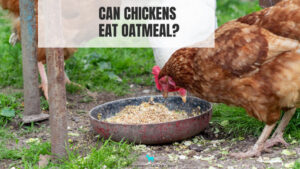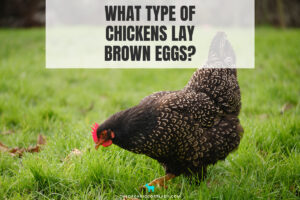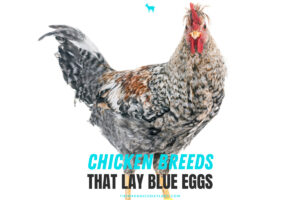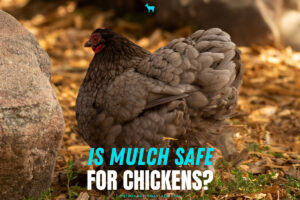Are chickens warm blooded or cold blooded? Can they handle extreme temperatures? Do they need external help with finding heat and cooling themselves?
This site contains affiliate links. If you make a purchase using one of these links, I may earn a commission. Please click here for more information about cookies collected and our privacy policy.
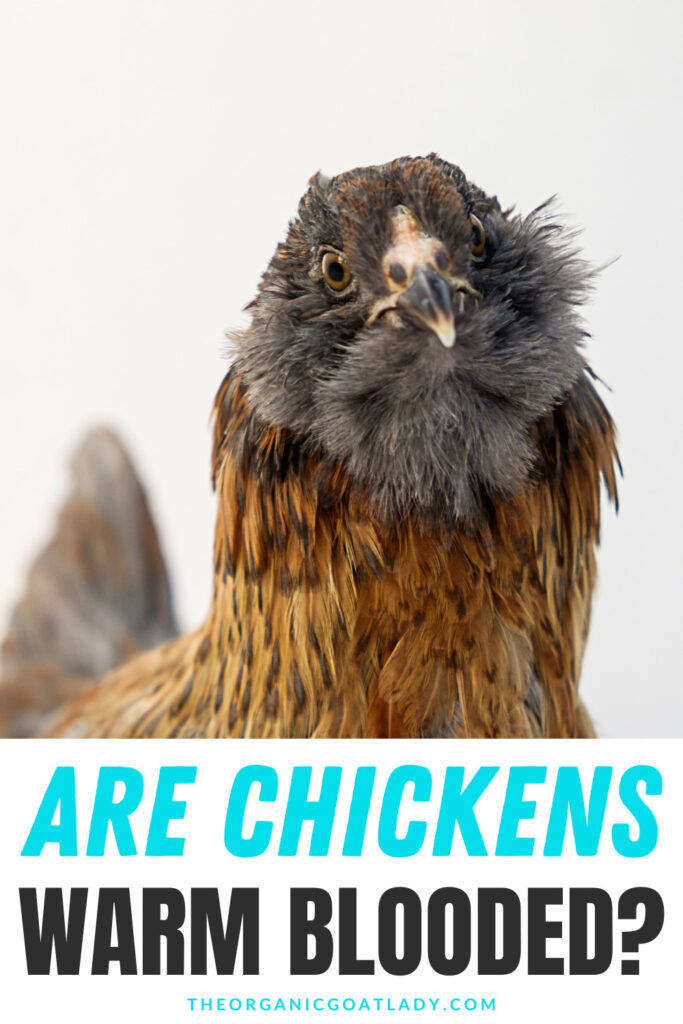
Are Chickens Warm Blooded?
Before we answer these questions, first lets understand exactly what warm blooded animals are.
What are Warm-Blooded Creatures?
Warm-blooded, also known as endothermic, refers to animals that have the ability to regulate their own body temperature internally, maintaining a relatively constant temperature even when the external environmental conditions change. These animals can generate and manage heat through their metabolic processes.
Warm-blooded animals, including mammals and birds, have several characteristics:
1. Constant Body Temperature: They can maintain a stable body temperature within a narrow range, typically around a specific set point (e.g., 98.6°F or 37°C for humans), regardless of the temperature of their surroundings.
2. Metabolic Heat Production: They produce heat through metabolic processes like digestion, muscle activity, and cellular respiration. This heat production helps them stay warm in cold environments.
3. Heat Dissipation: They can also dissipate excess heat when needed. This can be done through various mechanisms like sweating, panting, or altering blood flow to the skin’s surface, depending on the species.
Warm-blooded animals can adapt to a wide range of environmental conditions because they have the ability to regulate their own body heat and internal temperature, which is important for their overall health and survival. This is in contrast to cold-blooded animals (ectothermic), such as reptiles and amphibians, whose body temperature is primarily determined by the temperature of their surroundings.
What Are Cold-Blooded Creatures?
Cold-blooded, also known as ectothermic, refers to animals that cannot regulate their body temperature internally or keep a steady temperature on their own and instead rely on external sources of heat to control their body temperature. These animals have body temperatures that fluctuate with the temperature of their environment. Their metabolic rates and activity level are influenced by the surrounding temperature.
Cold-blooded animals are often described as having body temperatures that are “cold” or “cool” compared to warm-blooded animals, which can maintain a relatively constant and warmer body temperature.
Warm-Blooded Birds
So to answer our original question, yes, chickens are warm-blooded animals. This means that they are endothermic.
Being warm-blooded means that chickens can regulate their body temperature internally and maintain a relatively constant body temperature regardless of external environmental conditions.
Chickens, like other birds and mammals, have metabolic processes that generate heat to keep their bodies warm in cold environments and dissipate excess heat in warm conditions. This ability to regulate body temperature is crucial for their survival and overall well-being.
Are All Mammals Warm-Blooded?
Yes, all mammals are warm-blooded, which means they are endothermic animals capable of regulating their body temperature internally. This ability to maintain a relatively constant body temperature independent of the external environment is a defining characteristic of mammals.
Mammals have various mechanisms for regulating their body temperature, including metabolic processes that generate heat, insulation provided by fur or hair, and the ability to sweat or pant to cool down when necessary. This warm-bloodedness allows mammals to thrive in a wide range of environments, from the extreme cold of polar regions to the intense heat of deserts.
Examples of Warm-Blooded Animals
Here are some common examples of mammals that are warm-blooded animals, which are also known as endothermic animals:
1. Mammals: The majority of mammalian species are warm-blooded. Examples include:
– Humans
– Dogs
– Cats
– Elephants
– Whales
– Lions
– Squirrels
2. Birds: All bird species are warm-blooded. Examples include:
– Eagles
– Penguins
– Sparrows
– Owls
– Hawks
– Flamingos
3. Some Fish: While most fish are cold-blooded (ectothermic), some species of fish, like tuna and certain sharks, are partially warm-blooded. They can maintain their body temperature higher than the surrounding water to some extent.
4. Bats: Bats are the only mammals capable of sustained flight, and they are warm-blooded.
5. Whales and Dolphins: These marine mammals are warm-blooded and maintain a constant body temperature even in the cold ocean waters.
6. Hedgehogs: These small mammals are warm-blooded and are known for their spiky quills.
7. Kangaroos: These marsupials from Australia are also warm-blooded.
8. Horses: Domestic horses, like many other mammals, are warm-blooded.
9. Primates: All primates, including chimpanzees, gorillas, and lemurs, are warm-blooded.
10. Rabbits: These small mammals are warm-blooded and have a reputation for breeding rapidly.
These are just a few examples, but the vast majority of vertebrate animals fall into the warm-blooded category, including most mammals and all birds.
Examples of Cold-Blooded Animals
Cold-blooded creatures, also known as ectothermic animals, rely on external heat sources to regulate their body temperature. Their body temperature fluctuates with the outside temperature or the temperature of their environment.
Here are some examples of cold-blooded animals:
1. Reptiles: Most reptiles are cold-blooded. Examples include:
– Snakes
– Lizards
– Turtles
– Crocodiles
– Alligators
2. Amphibians: Amphibians are typically cold-blooded, although some can exhibit limited temperature regulation. Examples include:
– Frogs
– Toads
– Salamanders
– Newts
3. Fish: The majority of fish are cold-blooded, with their body temperature closely tied to the temperature of the water they inhabit. Examples include:
– Trout
– Salmon
– Bass
– Goldfish
4. Invertebrates: Many invertebrate animals, such as insects, spiders, and crustaceans, are also cold-blooded. Examples include:
– Butterflies
– Ants
– Spiders
– Crabs
5. Mollusks: Most mollusks, including snails, clams, and squid, are cold-blooded.
6. Echinoderms: Creatures like starfish and sea urchins are cold-blooded marine animals.
Cold-blooded animals are often more active in warm environments when their body temperature is higher, and they become less active in colder conditions. They may rely on behaviors like basking in the sun or seeking shelter to regulate their temperature.
Can Chickens Survive in Extreme Cold?
If chickens are warm blooded and can regulate their body temperature does that mean that they can survive in cold extreme temperatures?
Chickens can survive in cold temperatures to some extent, but their ability to do so depends on various factors, including the breed of chicken, the specific environmental conditions, and the care provided by their owners. Here are some considerations:
1. Chicken Breed: Some chicken breeds are more cold-hardy than others. For example, breeds like the Rhode Island Red, Plymouth Rock, and Wyandotte are known for their ability to tolerate colder temperatures. Breeds with thick feathers and smaller combs and wattles tend to be more cold-resistant.
2. Proper Shelter: Providing chickens with a well-insulated coop is essential in extreme cold. The coop should be draft-free, dry, and well-ventilated. Insulation and bedding can help maintain a comfortable temperature inside a winter chicken coop.
3. Heating: In extremely cold conditions, some chicken keepers use supplemental heating methods, such as heat lamps or heated waterers, to prevent freezing. However, these should be used with caution to avoid fire hazards and overheating.
4. Ventilation: Proper ventilation is crucial to prevent moisture buildup inside the coop, as excessive humidity can make chickens more susceptible to cold-related health issues. Adequate ventilation helps maintain a dry environment.
5. Access to Food and Water: Ensure that chickens have access to fresh water at all times, as they can become dehydrated in cold weather. Providing them with high-energy food, such as cracked corn or grains, can also help them maintain body heat.
6. Cold-Weather Precautions: Chickens may benefit from additional care in extreme cold, such as extra bedding in the coop, covering windows with plastic during cold spells, and checking for signs of frostbite on combs and wattles.
7. Behavioral Adaptations: Chickens are known to adapt to colder temperatures by fluffing their feathers to create an insulating layer of warm air close to their bodies. They may also huddle together for warmth.
It’s important to monitor your chickens closely during extremely cold weather and take appropriate measures to ensure their well-being. Severe cold can be stressful and potentially harmful to chickens, so providing them with the necessary care and protection is crucial for their survival in extreme cold conditions.
Can Chickens Survive in High Temperatures?
Now what about extreme heat? Can chickens survive in warmer climates and hot extreme weather?
Chickens can tolerate and survive in high temperatures, but their ability to do so depends on various factors, including the breed of chicken, the specific environmental conditions, and the measures taken to keep them cool and comfortable.
Here are some considerations for keeping chickens in hot weather:
1. Chicken Breed: Some chicken breeds are more heat-resistant than others. For example, Mediterranean breeds like Leghorns and Minorcas tend to handle heat better due to their smaller size and lighter-colored feathers.
2. Shade: Providing ample shade is crucial in hot weather. Chickens can overheat quickly when exposed to direct sunlight for extended periods. Ensure that your chicken house and run have shaded areas, and consider adding natural shade elements like trees or shrubs.
3. Ventilation: Proper ventilation in the coop is essential to allow hot air to escape and fresh air to circulate. Adequate airflow helps prevent heat buildup inside the coop.
4. Water: Chickens need access to clean, cool water at all times. Ensure that their water containers are filled with fresh water and regularly check to make sure it’s not too hot. Some chicken keepers even add ice to the water in extreme heat.
5. Cooling Methods: You can use various methods to help chickens cool down, such as misting systems, shallow pools of water for them to wade in, or providing frozen treats like watermelon. Some chicken owners use fans in the coop to improve air circulation.
6. Reduced Activity: In hot weather, chickens may naturally reduce their activity to conserve energy and avoid overheating. This is normal, and it’s essential not to stress them with unnecessary handling or disturbances.
7. Dust Baths: Chickens take dust baths to help control parasites and regulate their body temperature. Ensure they have access to a dry, dusty area for this purpose.
8. Monitoring for Heat Stress: Keep a close eye on your chickens during hot weather. Signs of heat stress in chickens may include panting, holding their wings away from their bodies, and reduced egg production. If you notice any of these signs, take immediate steps to cool them down.
It’s important to be proactive in protecting chickens from extreme heat, as high temperatures can be stressful and potentially harmful to their health. By providing the right conditions, access to water, and attention to their behavior, you can help chickens thrive in hot weather.
It’s also important to pay special attention to young birds, as they may not handle an extreme environmental temperature as well as a full grown bird.
It’s also important to remember that extreme temperatures can effect how well a chicken can lay eggs as well.
Additional Information for Raising Chickens


